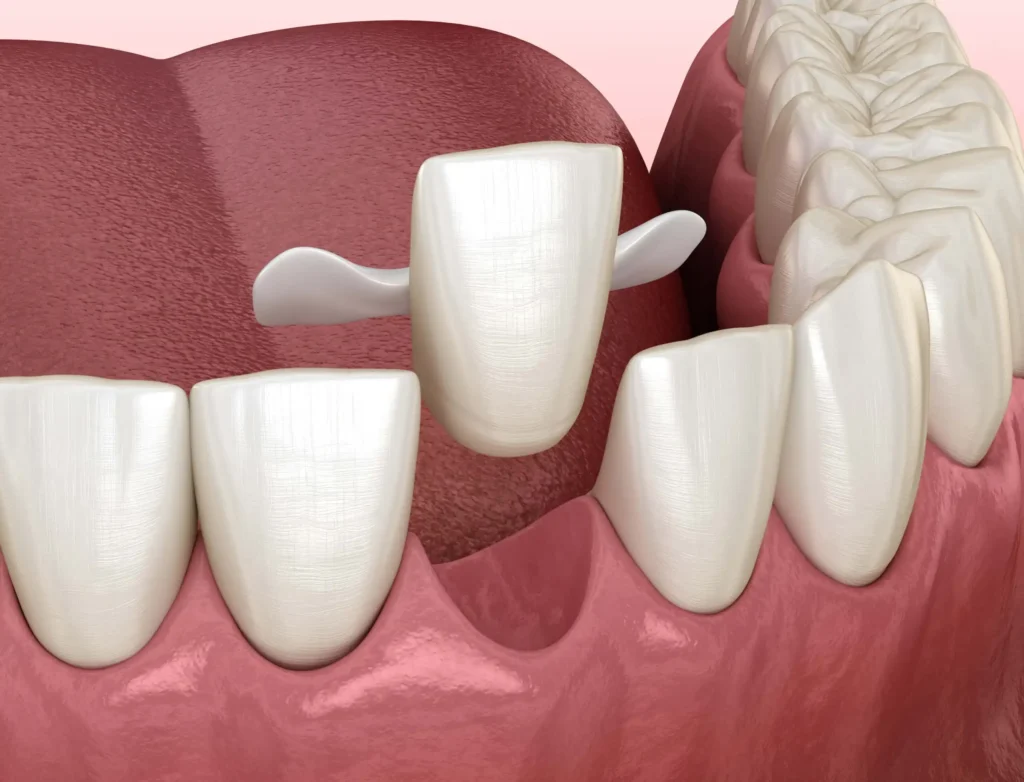If you’ve lost a tooth, you’re not alone. Tooth loss is a common issue faced by many, whether it’s due to accidents, decay, or gum disease. Fortunately, there are multiple dental restoration solutions to bring back that winning smile. One of the most talked-about methods? The Maryland bridge. You may have heard of it from your dentist or during your search for tooth replacement options. But what exactly is a Maryland bridge, and is it right for you? Let’s dive into the nuts and bolts of this innovative dental treatment.
What Is a Maryland Bridge?
A Maryland bridge is a type of dental bridge used to replace a missing tooth. Unlike traditional bridges, which rely on crowns placed over adjacent teeth, the Maryland bridge uses a conservative approach by attaching to the backside of the teeth next to the gap. This means no need for major reshaping of neighboring teeth—bonus!
How Does It Work?
Simply put, a Maryland bridge consists of a false tooth (also called a pontic) that’s supported by a metal or porcelain framework. This framework is bonded to the backside of the adjacent natural teeth using dental cement. Because of its minimalistic design, it doesn’t require as much modification to your existing teeth as other types of bridges do.
The Maryland Bridge: A Closer Look at Its Benefits

1. Minimal Tooth Preparation
One of the main reasons patients and dentists alike are fond of the Maryland bridge is its conservative nature. Unlike traditional bridges, where dentists need to file down the neighboring teeth for crowns, a Maryland bridge requires very little alteration. This is ideal for those who want a less invasive approach.
- No need for major drilling: The only preparation needed is creating small grooves or etching on the backside of the adjacent teeth to hold the framework in place.
- Preservation of tooth structure: Since there’s minimal intervention, your natural teeth stay largely intact.
2. Cost-Effective and Efficient
Let’s face it—dental work can be pricey. But the Maryland bridge offers an affordable alternative to more expensive solutions like dental implants. While implants might require surgery, healing time, and a heavier price tag, a Maryland bridge can typically be completed within just two visits to your dentist.
- Lower cost than implants or traditional bridges
- Quicker procedure: No surgery or long recovery times are necessary.
- Ideal for front teeth: Its design makes it especially useful for replacing front teeth, where aesthetics and less stress on the teeth are a priority.
3. Aesthetics and Durability
You want a solution that looks and feels natural, right? The Maryland bridge can do just that. Modern advancements in dental materials mean that the metal or porcelain framework is nearly invisible, and the false tooth (pontic) blends seamlessly with your natural smile.
- Natural-looking results: The false tooth is custom-made to match the shade and shape of your surrounding teeth.
- Long-lasting durability: When cared for properly, a Maryland bridge can last for many years.
Pros and Cons of the Maryland Bridge

While the Maryland bridge sounds like a dream come true, it’s not without its drawbacks. Here’s a balanced look at the pros and cons:
Pros:
- Conservative approach: Less drilling and preparation needed compared to other bridges.
- Affordability: Lower cost than implants and some other bridge types.
- Quick installation: Usually completed in just two dental visits.
- Great for front teeth: Especially suitable for areas where cosmetic appearance is crucial.
Cons:
- Limited use in back teeth: Not recommended for molars or areas under heavy chewing forces, as the framework may not be strong enough.
- Bonding issues: The metal or porcelain wings might not bond as securely to the adjacent teeth, leading to potential detachment.
- Aesthetic considerations: In cases where the metal framework is used, it can sometimes cast a shadow on adjacent teeth, making them appear slightly darker.
Is the Maryland Bridge Right for You?
Now that you know the basics, you might be wondering—am I a good candidate for a Maryland bridge? Well, there are a few factors that can help determine whether this option is the best fit for you.
1. Ideal Candidates
- One or two missing teeth: The Maryland bridge is typically best for patients missing one or two teeth, especially in the front of the mouth.
- Healthy adjacent teeth: The teeth next to the gap must be in good condition since they’ll support the bridge.
- Cost-conscious patients: If you’re looking for an affordable option without resorting to a more invasive procedure, this bridge might be ideal.
2. Who Should Consider Other Options?
While the Maryland bridge is a great solution in many cases, it’s not suitable for everyone. Patients missing molars or those with significant gaps might need to look into alternative methods like traditional bridges or implants.
- Missing multiple teeth in a row: If you’re missing more than two teeth, other solutions may offer more stability.
- Severe bite issues or grinding: Those with bruxism (teeth grinding) or significant bite problems may put too much stress on the bridge, causing it to fail.
FAQs About the Maryland Bridge
1. How long does a Maryland bridge last?
With proper care and maintenance, a Maryland bridge can last anywhere from 5 to 10 years, though some can last longer. Regular dental check-ups and good oral hygiene will help ensure its longevity.
2. Can I eat normally ?
Yes, but it’s advisable to be cautious when eating hard or sticky foods, as these can damage the bridge or cause it to detach from the supporting teeth. Chewing on the opposite side and avoiding habits like nail-biting or pen-chewing will help extend the bridge’s life.
3. Is the procedure painful?
Not at all! The process of fitting a Maryland is relatively painless. Since there’s minimal preparation involved, patients typically only need local anesthesia to keep them comfortable.
4. Will my Maryland bridge look natural?
Absolutely. Dentists customize the false tooth to match the color, size, and shape of your natural teeth, ensuring the final result looks seamless.
5. Can the bridge be repaired if it becomes loose?
Yes, if the Maryland bridge comes loose or detaches, your dentist can usually re-cement it back into place. However, if the bridge is damaged or the supporting teeth change, a replacement may be necessary.
Conclusion
In a world where tooth loss can feel like the end of the world, the Maryland bridge offers a quick, affordable, and minimally invasive solution to restore your smile. Ideal for front teeth, this type of dental bridge allows you to regain both function and aesthetics without the need for extensive surgery or preparation of your adjacent teeth. Whether you’re looking for a temporary fix or a longer-term solution, the Maryland bridge could be just what the dentist ordered.
With minimal drilling, a natural look, and a quicker turnaround than other options, it’s no wonder why so many people choose this solution for replacing missing teeth. However, like with any dental procedure, it’s essential to discuss your specific needs with your dentist to ensure it’s the right fit for you.
Key Takeaways
- The Maryland bridge is a minimally invasive dental bridge designed for replacing one or two missing teeth.
- It’s a cost-effective and quicker alternative to implants, especially suitable for front teeth.
- While it offers great aesthetic results, it’s not ideal for all tooth-loss scenarios, particularly in areas under high chewing stress.
If you’re weighing your tooth replacement options, talk to your dentist about the Maryland bridge—you might just find it’s the perfect fit for your smile.
Discover more trends:
- Healthy Breakfast Ideas: The 12 Best Foods to Eat in the Morning
- Ovaltine Healthy? Benefits, Ingredients, and Nutritional Value Explained
- 10 Best Foods to Eat If You Have Arthritis
- Watch Out For The Early Signs Of Rheumatoid Arthritis
- Follow us on Facebook
- Follow us on Pinterest













